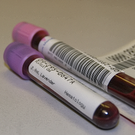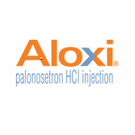
Researchers from Canada have found that long exposure to novel agents as well as achievement of higher response rates contribute to long-term survival in multiple myeloma patients. They presented their findings at the American Society of Hematology Meeting (ASH) on December 6.
The term “long-term survivor” refers to a person who is alive for ten or more years following diagnosis of myeloma. Long-term survival is still unusual in multiple myeloma. Less than 10 percent of patients fall into the category …
Read the full story »

Carfilzomib, which is a proteasome inhibitor under development as a treatment for multiple myeloma, has recently been shown to be a safe and effective treatment for myeloma patients with kidney failure, chromosomal abnormalities, or peripheral neuropathy. These results will be presented at the 51st American Society of Hematology (ASH) Annual Meeting and Exposition in New Orleans December 5 through 8.
Additionally, ASH presenters will examine the effects of carfilzomib in patients who have previously been treated with Velcade (bortezomib) …
Read the full story »

Preliminary results from several clinical trials testing carfilzomib (Kyprolis) for the treatment of multiple myeloma will be presented at the 51st American Society of Hematology (ASH) Annual Meeting and Exposition in New Orleans December 5 through 8.
Carfilzomib, a proteasome inhibitor, is under development as a treatment for relapsed or refractory multiple myeloma. It is currently in Phase 2 of clinical testing, which means that its safety and efficacy are being studied.
The ASH presenters will examine the effects of …
Read the full story »

A study published in Annals of Hematology examined the relationship between serum albumin levels and disease severity in multiple myeloma patients. Results showed that lower levels of serum albumin are associated with greater disease severity.
Serum albumin is the most abundant protein in blood plasma in humans. A patient’s serum albumin level indicates the amount of albumin in grams per deciliter (g/dL) of serum. It is measured by a serum albumin test.
This study retrospectively examined 373 multiple myeloma patients …
Read the full story »

On September 22, Dr. Antonio Pinto of the National Cancer Institute in Naples, Italy announced that two doses of Aloxi (palonosetron) are more effective than one at preventing chemotherapy-induced nausea. He presented his results at the European Cancer Organization and European Society for Medical Oncology’s joint conference in Berlin.
Dr. Pinto studied 60 cancer patients, including some with multiple myeloma, who were being treated with chemotherapy. All patients received one dose of Aloxi, approved by the Food and Drug Administration …
Read the full story »

A recent Phase 2 study, published in the journal Bone Marrow Transplantation, evaluated Mozobil’s (plerixafor) ability to mobilize stem cells from the bone marrow into the blood without increasing the mobility of tumor cells in multiple myeloma patients.
One common treatment option available to eligible myeloma patients is high dose chemotherapy followed by autologous stem cell transplantation. Before chemotherapy, the patient’s own stem cells are collected by peripheral blood apheresis, which looks and feels similar to a routine blood …
Read the full story »

